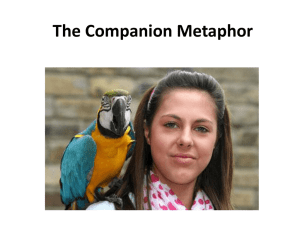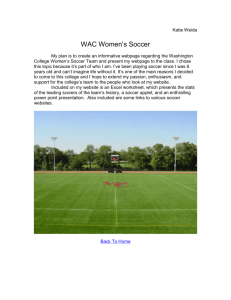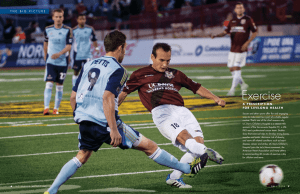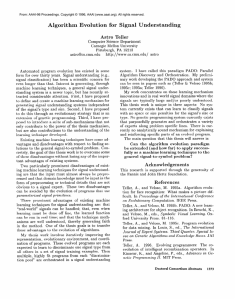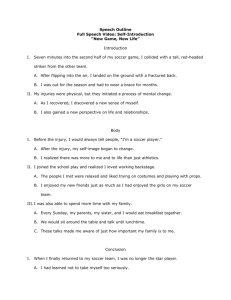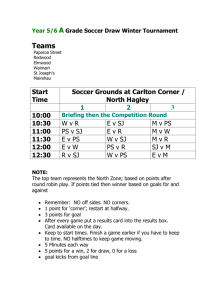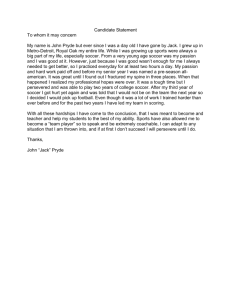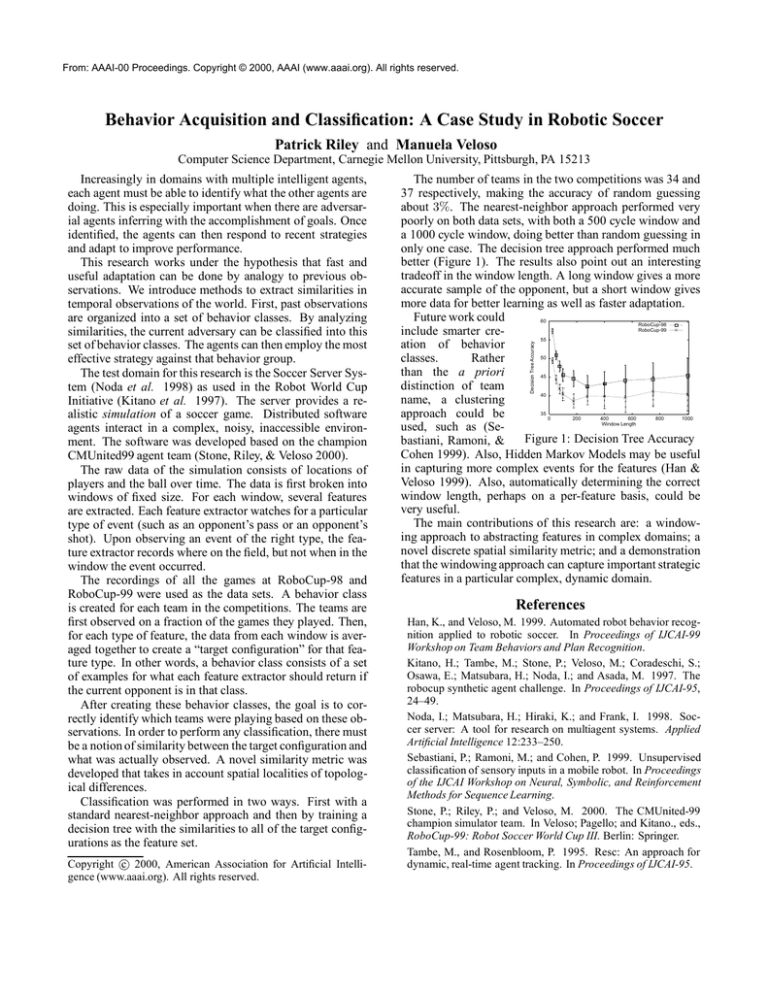
From: AAAI-00 Proceedings. Copyright © 2000, AAAI (www.aaai.org). All rights reserved.
Behavior Acquisition and Classification: A Case Study in Robotic Soccer
Patrick Riley and Manuela Veloso
Computer Science Department, Carnegie Mellon University, Pittsburgh, PA 15213
c 2000, American Association for Artificial IntelliCopyright gence (www.aaai.org). All rights reserved.
The number of teams in the two competitions was 34 and
37 respectively, making the accuracy of random guessing
about 3%. The nearest-neighbor approach performed very
poorly on both data sets, with both a 500 cycle window and
a 1000 cycle window, doing better than random guessing in
only one case. The decision tree approach performed much
better (Figure 1). The results also point out an interesting
tradeoff in the window length. A long window gives a more
accurate sample of the opponent, but a short window gives
more data for better learning as well as faster adaptation.
Future work could
include smarter creation of behavior
classes.
Rather
than the a priori
distinction of team
name, a clustering
approach could be
used, such as (SeFigure 1: Decision Tree Accuracy
bastiani, Ramoni, &
Cohen 1999). Also, Hidden Markov Models may be useful
in capturing more complex events for the features (Han &
Veloso 1999). Also, automatically determining the correct
window length, perhaps on a per-feature basis, could be
very useful.
The main contributions of this research are: a windowing approach to abstracting features in complex domains; a
novel discrete spatial similarity metric; and a demonstration
that the windowing approach can capture important strategic
features in a particular complex, dynamic domain.
60
Decision Tree Accuracy
Increasingly in domains with multiple intelligent agents,
each agent must be able to identify what the other agents are
doing. This is especially important when there are adversarial agents inferring with the accomplishment of goals. Once
identified, the agents can then respond to recent strategies
and adapt to improve performance.
This research works under the hypothesis that fast and
useful adaptation can be done by analogy to previous observations. We introduce methods to extract similarities in
temporal observations of the world. First, past observations
are organized into a set of behavior classes. By analyzing
similarities, the current adversary can be classified into this
set of behavior classes. The agents can then employ the most
effective strategy against that behavior group.
The test domain for this research is the Soccer Server System (Noda et al. 1998) as used in the Robot World Cup
Initiative (Kitano et al. 1997). The server provides a realistic simulation of a soccer game. Distributed software
agents interact in a complex, noisy, inaccessible environment. The software was developed based on the champion
CMUnited99 agent team (Stone, Riley, & Veloso 2000).
The raw data of the simulation consists of locations of
players and the ball over time. The data is first broken into
windows of fixed size. For each window, several features
are extracted. Each feature extractor watches for a particular
type of event (such as an opponent’s pass or an opponent’s
shot). Upon observing an event of the right type, the feature extractor records where on the field, but not when in the
window the event occurred.
The recordings of all the games at RoboCup-98 and
RoboCup-99 were used as the data sets. A behavior class
is created for each team in the competitions. The teams are
first observed on a fraction of the games they played. Then,
for each type of feature, the data from each window is averaged together to create a “target configuration” for that feature type. In other words, a behavior class consists of a set
of examples for what each feature extractor should return if
the current opponent is in that class.
After creating these behavior classes, the goal is to correctly identify which teams were playing based on these observations. In order to perform any classification, there must
be a notion of similarity between the target configuration and
what was actually observed. A novel similarity metric was
developed that takes in account spatial localities of topological differences.
Classification was performed in two ways. First with a
standard nearest-neighbor approach and then by training a
decision tree with the similarities to all of the target configurations as the feature set.
RoboCup-98
RoboCup-99
55
50
45
40
35
0
200
400
600
Window Length
800
1000
References
Han, K., and Veloso, M. 1999. Automated robot behavior recognition applied to robotic soccer. In Proceedings of IJCAI-99
Workshop on Team Behaviors and Plan Recognition.
Kitano, H.; Tambe, M.; Stone, P.; Veloso, M.; Coradeschi, S.;
Osawa, E.; Matsubara, H.; Noda, I.; and Asada, M. 1997. The
robocup synthetic agent challenge. In Proceedings of IJCAI-95,
24–49.
Noda, I.; Matsubara, H.; Hiraki, K.; and Frank, I. 1998. Soccer server: A tool for research on multiagent systems. Applied
Artificial Intelligence 12:233–250.
Sebastiani, P.; Ramoni, M.; and Cohen, P. 1999. Unsupervised
classification of sensory inputs in a mobile robot. In Proceedings
of the IJCAI Workshop on Neural, Symbolic, and Reinforcement
Methods for Sequence Learning.
Stone, P.; Riley, P.; and Veloso, M. 2000. The CMUnited-99
champion simulator team. In Veloso; Pagello; and Kitano., eds.,
RoboCup-99: Robot Soccer World Cup III. Berlin: Springer.
Tambe, M., and Rosenbloom, P. 1995. Resc: An approach for
dynamic, real-time agent tracking. In Proceedings of IJCAI-95.


